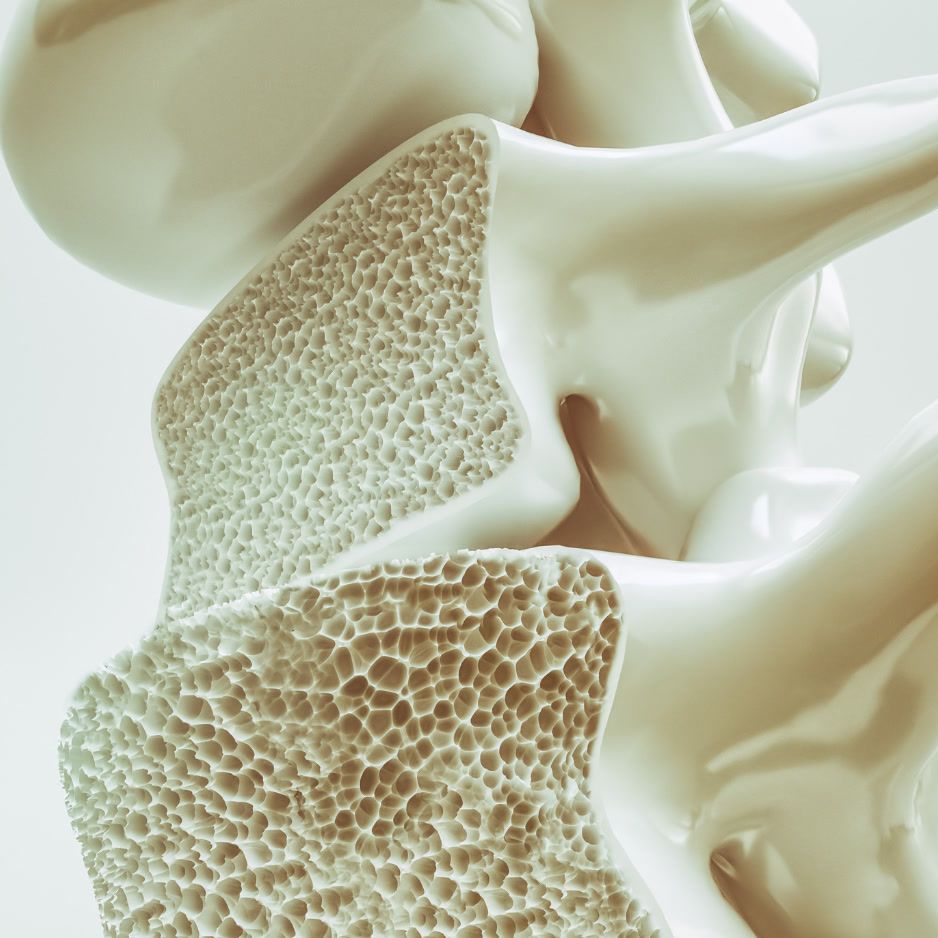Visceral Fat vs. Subcutaneous Fat: Understanding the Differences
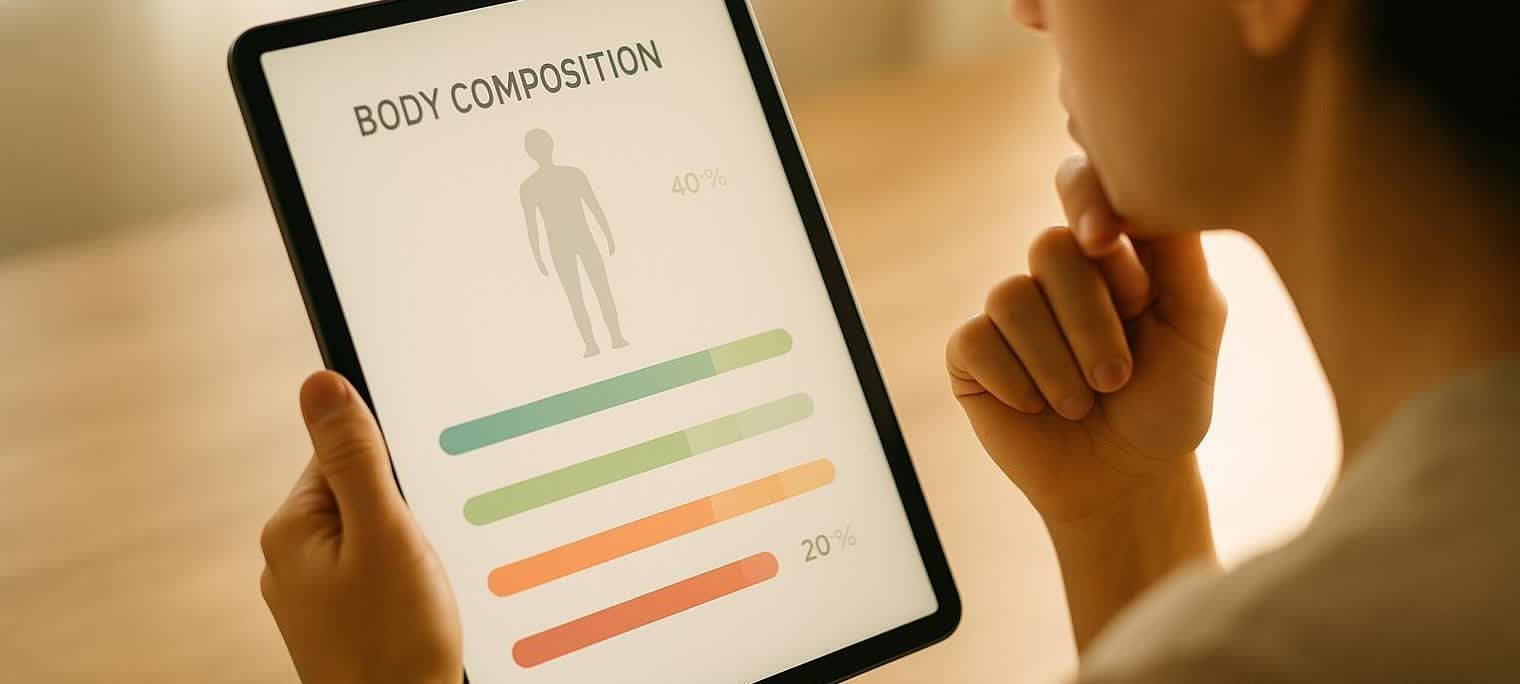
Visceral Fat vs Subcutaneous Fat: Why the Hidden Kind Matters More
Ever pinch the soft layer around your waist and wonder how much of that fat actually threatens your health? That easily pinched layer is subcutaneous fat—the cushioning tissue just under your skin. Less visible, but far riskier, is the visceral fat packed deep inside your abdomen, surrounding vital organs. Understanding the difference between visceral fat vs subcutaneous fat—and knowing which type you’re carrying more of—can significantly influence your long-term health.
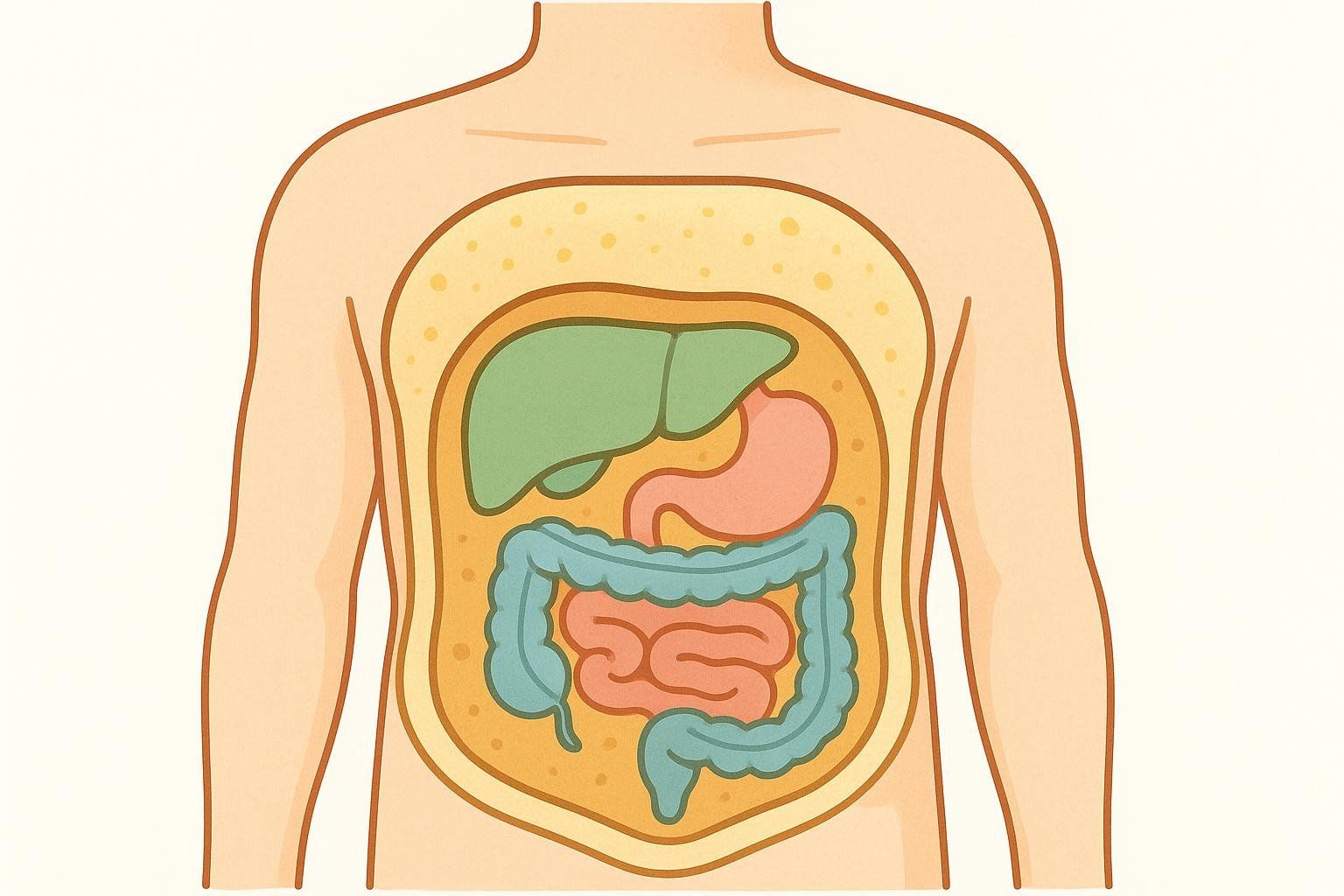
Quick take: Subcutaneous fat is the fat layer you can grasp; visceral fat is the hidden type that silently hikes your risk for heart disease, diabetes, and more. A DEXA scan is the most practical way to measure both accurately.
Visceral vs. Subcutaneous Fat: Which Is Worse?
Visceral fat is worse for your health because it lives inside the abdominal cavity and releases inflammatory molecules directly into the portal vein that drains to the liver, amplifying metabolic disruption (Ibrahim 2010). These chemicals spike insulin resistance, raise blood pressure, and increase cardiovascular and metabolic disease risk far more than equivalent amounts of subcutaneous fat.
Subcutaneous fat can certainly become problematic when it’s excessive, but it generally acts as passive energy storage rather than an active endocrine organ with disruptive potential. In short: excessive subcutaneous fat is mostly cosmetic, whereas elevated visceral fat is a significant metabolic risk factor.

At-a-Glance Comparison
| Feature | Subcutaneous Fat | Visceral Fat |
|---|---|---|
| Location | Under the skin (the fat layer you can grasp) | Around organs in the abdominal cavity |
| Primary Purpose | Insulation, energy storage, shock absorption | Emergency energy storage, organ protection |
| Health Risk | Moderate—excess can stress joints & metabolism | High—actively secretes inflammatory hormones |
| How to See It | Skinfold calipers, smart scales, mirror test | Imaging (DEXA, CT/MRI), waist measurements |
| Response to Lifestyle Change | Slower but steady | Mobilizes quickly with proper intervention |
The Metabolic Impact of Visceral Fat
Visceral adipose tissue behaves more like an endocrine organ than passive padding. It releases inflammatory signaling proteins—called cytokines such as interleukin-6 (IL-6) and tumor necrosis factor-alpha (TNF-α)—that disrupt insulin sensitivity, raise LDL cholesterol, and stiffen blood vessels (Harvard Health). In women, visceral fat also accumulates more readily after menopause when falling estrogen levels redistribute fat storage toward the mid-section.

Quantified Risk Bump
- Cardiovascular disease: approximately 11 % higher risk for every 10 cm increase in waist circumference (hazard ratio 1.11), according to a 2021 dose-response meta-analysis.
- Type 2 diabetes: A longitudinal cohort in Diabetologia found visceral fat mass to be the strongest independent predictor of future diabetes, outperforming BMI and subcutaneous fat.
How to Measure the Fat You Can’t See
1. Tape Test (Good for Screening)
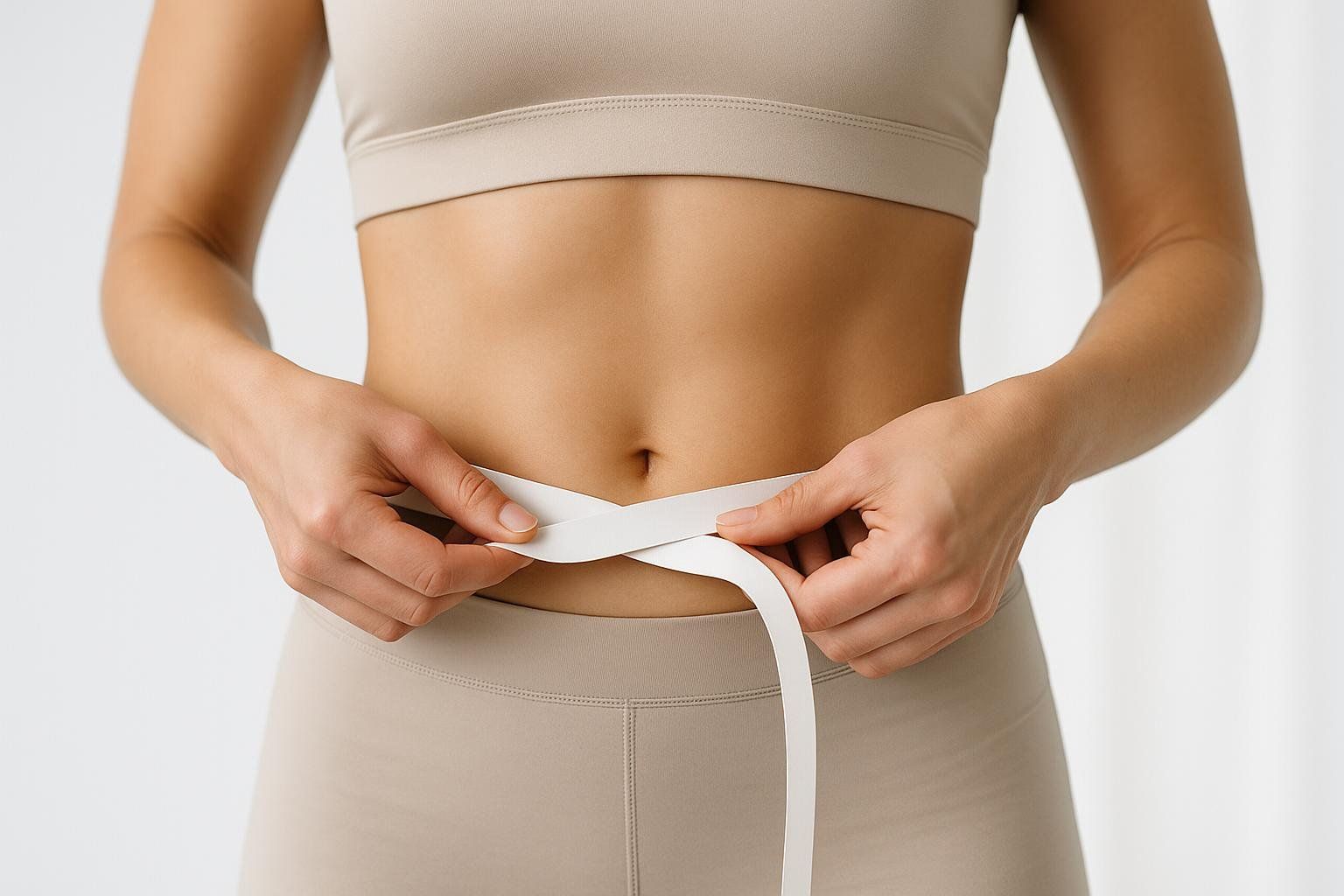
- Stand tall, exhale, and loop a soft tape one finger above your navel.
- Record the number without sucking in.
| Population | Increased Risk | High Risk |
|---|---|---|
| Men | ≥ 37 in (94 cm) | ≥ 40 in (102 cm) |
| Women | ≥ 31.5 in (80 cm) | ≥ 35 in (88 cm) |
Source: Cleveland Clinic
2. Waist-to-Hip Ratio (WHR)
Divide your waist by your hip circumference. A WHR above 0.90 (men) or 0.85 (women) signals elevated visceral fat (WHO).
3. BMI (Poor Proxy—Here’s Why)
BMI can’t reveal where fat sits. For details, see Why BMI Fails to Measure Visceral Fat.
4. Imaging Gold Standards
| Method | Accuracy | Considerations |
|---|---|---|
| CT or MRI | Near-perfect 3-D mapping | Expensive; CT involves higher radiation; MRI less available |
| DEXA Scan | ± 40 g error in visceral fat mass measurement | Very low X-ray dose (≈ 4 bananas); quick 10-min appointment |
A BodySpec DEXA scan visualizes visceral fat in a color-coded heat map and gives you an exact gram count, enabling precise tracking of changes in this harmful fat.
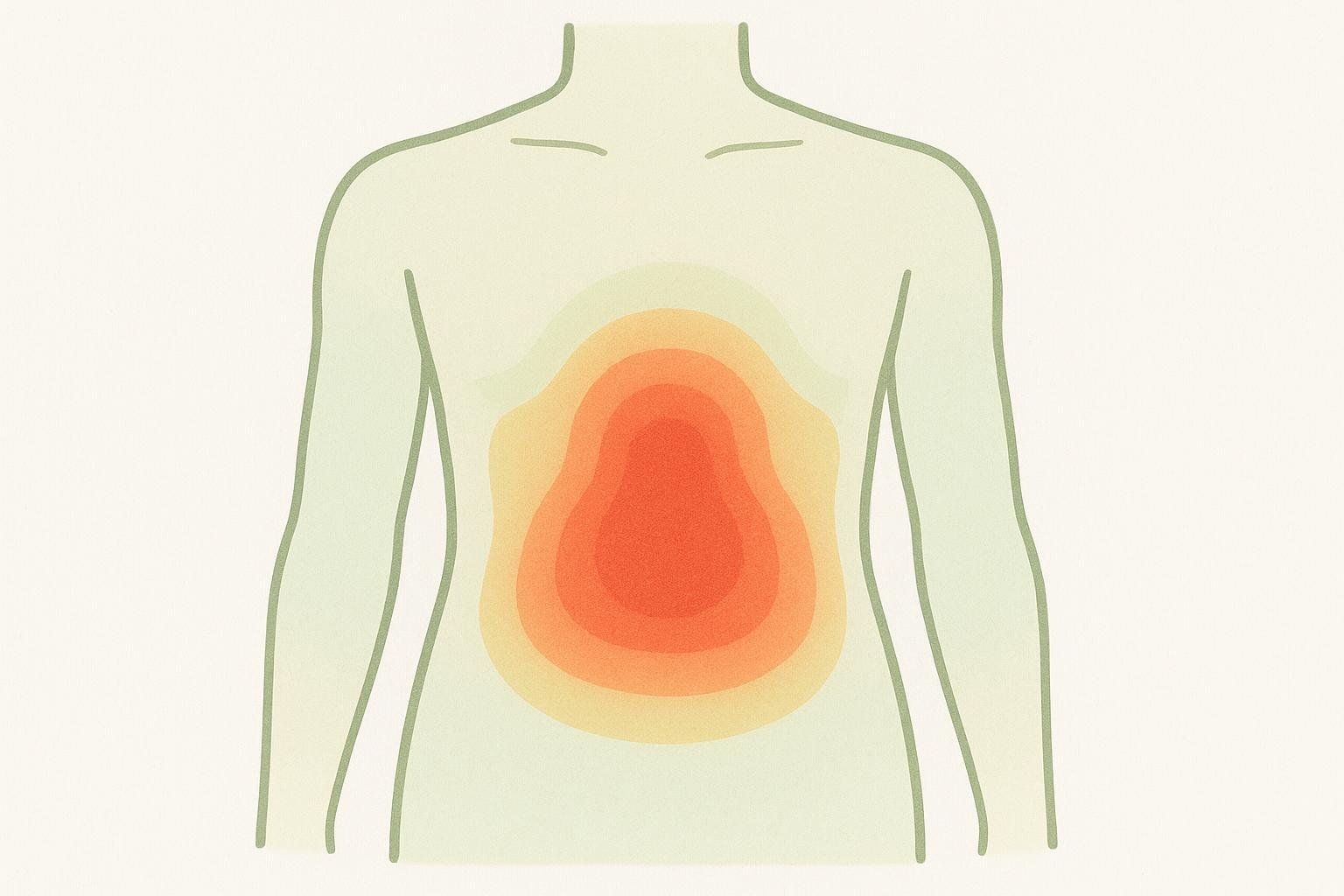
How Do You Get Rid of Visceral Fat vs. Subcutaneous Fat?
The good news: the same lifestyle pillars—nutrition, exercise, sleep, and stress control—reduce both kinds of fat. The key difference is timeline.

| Goal | Visceral Fat | Subcutaneous Fat |
|---|---|---|
| Approx. First Measurable Change | 4–8 weeks (Wang 2022) | 8–12 weeks (Wang 2022) |
| Calorie Deficit Needed | Moderate (≈ 300–500 kcal/day) (Kim 2020) | Similar but often must be sustained longer |
| Exercise Response | Highly responsive to HIIT & resistance training | Responds, but more slowly |
Visceral fat sits closer to the body’s blood supply, so it receives fat-burning hormones faster and is broken down sooner once you create an energy deficit. That’s why early wins on a fat-loss plan usually come from deep abdominal visceral stores—long before love handles shrink.
What Burns the Most Visceral Fat?
Current evidence points to a combo of high-intensity interval training (HIIT) plus full-body resistance work as the fastest visceral-fat burner:
- HIIT Sprints – 4 × 4-minute intervals at ~90 % max heart rate, three times per week, significantly reduce visceral fat and show a trend toward greater reduction than moderate-intensity continuous training (2022 systematic review).
- Compound Lifts – Multi-joint moves like squats, rows, and presses elevate post-exercise oxygen consumption and improve insulin sensitivity—mechanisms linked to overall fat reduction, including visceral depots (Wewege 2022).
- Sleep Extension – Short sleepers who added 1–2 extra hours of sleep reduced calorie intake and experienced significant decreases in visceral fat area in lifestyle trials (JACC 2022).

Combine these with an anti-inflammatory, protein-rich diet to accelerate results.
Three-Phase Fat-Loss Protocol
Phase 1: Anti-Inflammatory Diet (Week 0-4)
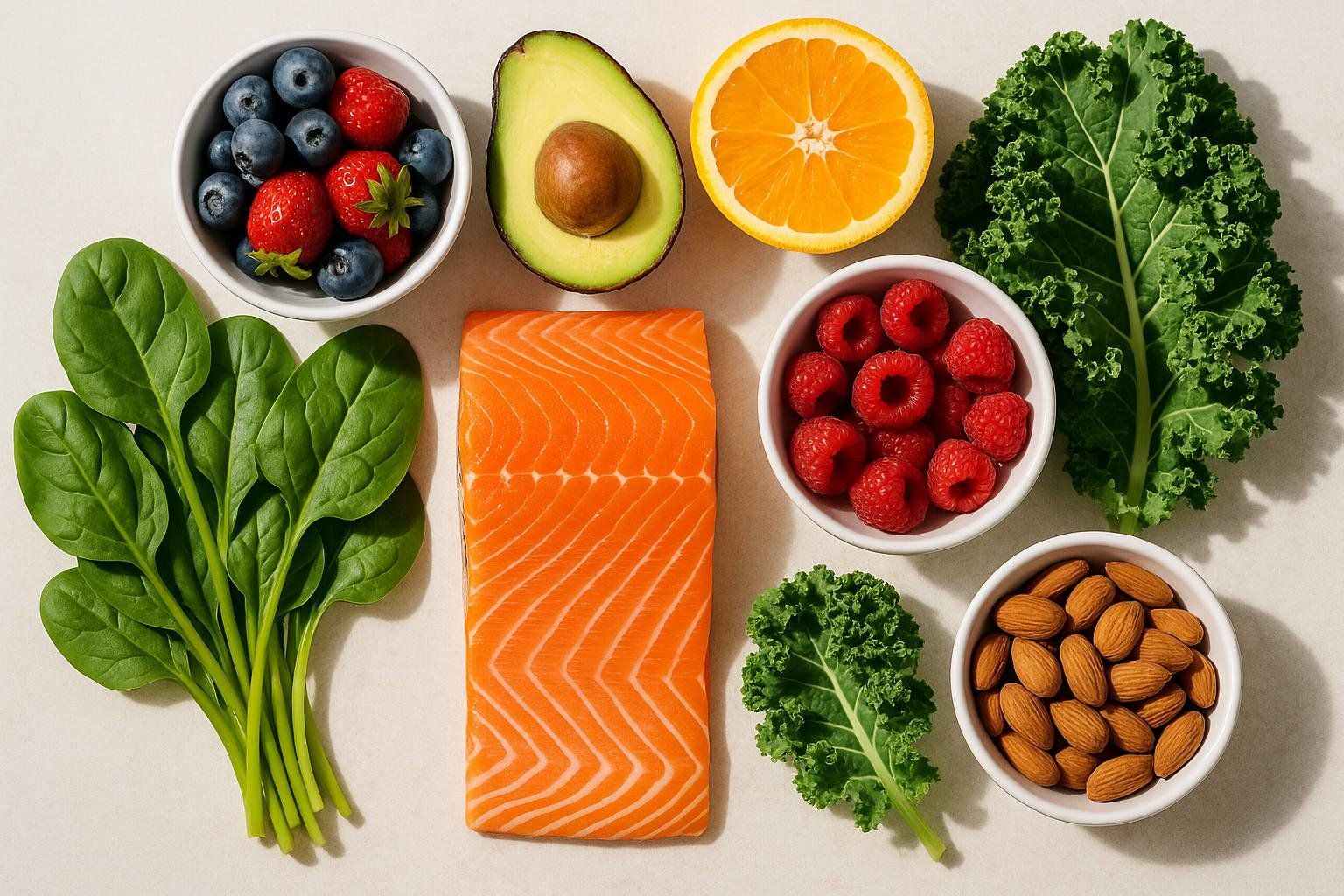
- Lean protein (~1.6 g/kg) & high-fiber carbs (≥ 25 g fiber/day) per ISSN and IOM DRI recommendations.
- Swap saturated fats for omega-3 sources.
- Cap added sugar at 25 g/day (AHA).
Phase 2: Exercise Programming (Week 4-12)
- Three HIIT sessions plus three strength circuits weekly.
- Track heart-rate zones and progressive overload.
Phase 3: Sleep & Stress Mastery (Ongoing)
Aim for 7–9 hours nightly and consider including practices like 10-minute breathing drills or yoga nidra daily to help manage cortisol levels, which can play a role in visceral fat accumulation.
Special Considerations
Postmenopausal Women
Falling estrogen shifts fat toward the abdomen. Weight-bearing lifts also safeguard bone density—tracked in the same DEXA session. For hormone-aware nutrition tips, read Metabolic Changes During Menopause.
Fitness Professionals & Health Data Enthusiasts
BodySpec’s CSV export lets you chart visceral-fat grams weekly. Combine with HR data to fine-tune HIIT—see HIIT vs LISS.
Clinicians & Dietitians
DEXA provides VAT mass and volume—metrics increasingly used in comprehensive obesity management and likely to inform future guidelines.
FAQ
What is worse, visceral or subcutaneous fat?
Visceral fat poses a much higher health risk because it wraps internal organs and releases inflammatory molecules directly into circulation, whereas subcutaneous fat is largely cosmetic until present in large amounts.
How do you get rid of visceral fat vs subcutaneous fat?
Create a calorie deficit, prioritize HIIT + strength training, and improve sleep. Visceral fat will usually drop first (within a month); subcutaneous fat requires the same habits sustained for a few extra weeks.
What burns the most visceral fat?
Evidence favors high-intensity interval training combined with full-body resistance workouts, supported by an anti-inflammatory diet and adequate sleep.
Are love handles visceral or subcutaneous?
Love handles are pockets of subcutaneous fat that sit just under the skin around the obliques. For a targeted action plan, see How to Get Rid of Love Handles.
Does liposuction remove visceral fat?
No. Liposuction only suctions subcutaneous fat between skin and muscle. Visceral fat surrounds organs and can’t be reached surgically.
Can skinny people have high visceral fat?
Absolutely. Up to 20 % of normal-BMI adults carry excess visceral fat—sometimes called “TOFI” (thin outside, fat inside) (Mayo Clinic).
Next Steps: Turn Knowledge into Action
- Measure your waist tonight.
- Schedule a BodySpec DEXA scan for precise visceral-fat data.
- Follow the three-phase plan and re-scan in 90 days.
This empowers individuals to effectively reduce harmful visceral fat and manage overall body composition.


